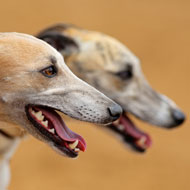Great snakes!
Credit: University of Florida photo by Kristen Grace/Florida Museum of Natural History
The largest snake found in Florida has been captured, measuring in at a whopping 17-foot-7-inches long and weighing a colossal 164.5 pounds. When researchers at the University of Florida examined the snake, it was found to contain 87 eggs - breaking another state record.
The snake was first caught in March and fitted with radio transmitters, whereupon it was released back into the wild to serve as what scientists call a 'Judas snake', so researchers could track the python to learn more about its breeding ground.
Burmese pythons are native to Southern Asia and arrived in the U.S. 30 years ago as part of the exotic pet industry. Although not poisonous, they are powerful enough to kill humans by suffocating them.
Kenneth Kyrsko, Floria Museum herpetology collection manager, described the snake as "monstrous, about a foot wide."
He added: "A 17.5-foot snake could eat anything it wants," Krysko said. "By learning what this animal has been eating and its reproductive status, it will hopefully give us insight into how to potentially manage other wild Burmese pythons in the future. It also highlights the actual problem, which is invasive species."



 The Greyhound Board of Great Britain has published new vaccination guidance, with all greyhounds registered from 1 January, 2027 required to have the L4 leptospirosis vaccination, rather than L2.
The Greyhound Board of Great Britain has published new vaccination guidance, with all greyhounds registered from 1 January, 2027 required to have the L4 leptospirosis vaccination, rather than L2.